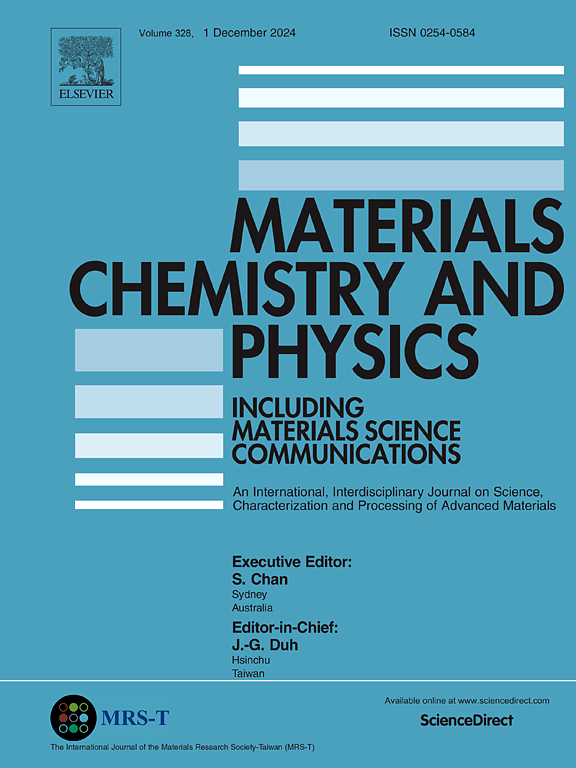A DFT and cluster expansion study of (Fe,Ni)9S8 pentlandite and unravelling doping with Mn, Co, Cu and precious metals
IF 4.3
3区 材料科学
Q2 MATERIALS SCIENCE, MULTIDISCIPLINARY
引用次数: 0
Abstract
This study used density functional theory (DFT) adopting the universal cluster expansion (UNCLE) technique to generate different structures for (Fe,Ni)9S8 pentlandite and doped with Mn, Co, Cu and precious metals (Ru, Rh, Pd, Os, Ir and Pt) on the Ni and Fe tetrahedral (T) sites. The cluster expansion (CE) depicted the Fe-rich Fe5Ni4S8 structure with space-group of P42/nmc (tetragonal) as the most stable. The doped Fe5Ni4S8 structure on the Fe(T) with Mn, Cu, Rh, Pd, Ir and Pt changed from tetragonal to cubic structures, while doping with Co, Ru and Os remained tetragonal. Doping on the Ni(T) with Co, the structure changed from tetragonal to cubic, while doping with Mn, Cu, Ru, Rh, Pd, Os, Ir and Pt the structure remained tetragonal. It was found that doping with Pd on the Fe(T) generated the most thermodynamically stable compound (Fe3Pd2Ni4S8) with heats of formation of −130.24 meV. The density of states (DOS) showed that the Pd and Pt were the most preferred substitution of Fe(T) in the pentlandite structure, while the Co preferred the Ni(T) sites. In addition doping with Mn on Fe(T) and Ru doped on Ni(T) induced magnetism to the structure. This study predicted various compositions of dopants on pentlandite and laid a foundation for prediction of new mineral-compounds using DFT-CE method.

对(Fe,Ni)9S8戊兰特的 DFT 和聚类展开研究,以及对锰、钴、铜和贵金属掺杂的揭示
本研究利用密度泛函理论(DFT),采用通用聚类展开(UNCLE)技术,生成了(Fe,Ni)9S8戊土矿的不同结构,并在 Ni 和 Fe 的四面体(T)位上掺杂了 Mn、Co、Cu 和贵金属(Ru、Rh、Pd、Os、Ir 和 Pt)。团簇扩展(CE)显示,富含铁的 Fe5Ni4S8 结构最稳定,其空间群为 P42/nmc(四方)。在 Fe(T)上掺入 Mn、Cu、Rh、Pd、Ir 和 Pt 后,Fe5Ni4S8 结构从四方结构变为立方结构,而掺入 Co、Ru 和 Os 后则保持四方结构。在 Ni(T)中掺入 Co 后,其结构从四方结构变为立方结构,而掺入 Mn、Cu、Ru、Rh、Pd、Os、Ir 和 Pt 后,其结构仍为四方结构。研究发现,在铁(T)上掺入钯会产生热力学上最稳定的化合物(Fe3Pd2Ni4S8),其形成热为-130.24 meV。状态密度(DOS)显示,钯和铂是戊兰特结构中最优选的铁(T)取代位,而钴则优选镍(T)位。此外,在铁(T)上掺杂锰和在镍(T)上掺杂钌也会使结构产生磁性。这项研究预测了掺杂剂在戊兰特上的各种组成,为使用 DFT-CE 方法预测新的矿物化合物奠定了基础。
本文章由计算机程序翻译,如有差异,请以英文原文为准。
求助全文
约1分钟内获得全文
求助全文
来源期刊

Materials Chemistry and Physics
工程技术-材料科学:综合
CiteScore
8.70
自引率
4.30%
发文量
1515
审稿时长
69 days
期刊介绍:
Materials Chemistry and Physics is devoted to short communications, full-length research papers and feature articles on interrelationships among structure, properties, processing and performance of materials. The Editors welcome manuscripts on thin films, surface and interface science, materials degradation and reliability, metallurgy, semiconductors and optoelectronic materials, fine ceramics, magnetics, superconductors, specialty polymers, nano-materials and composite materials.
 求助内容:
求助内容: 应助结果提醒方式:
应助结果提醒方式:


